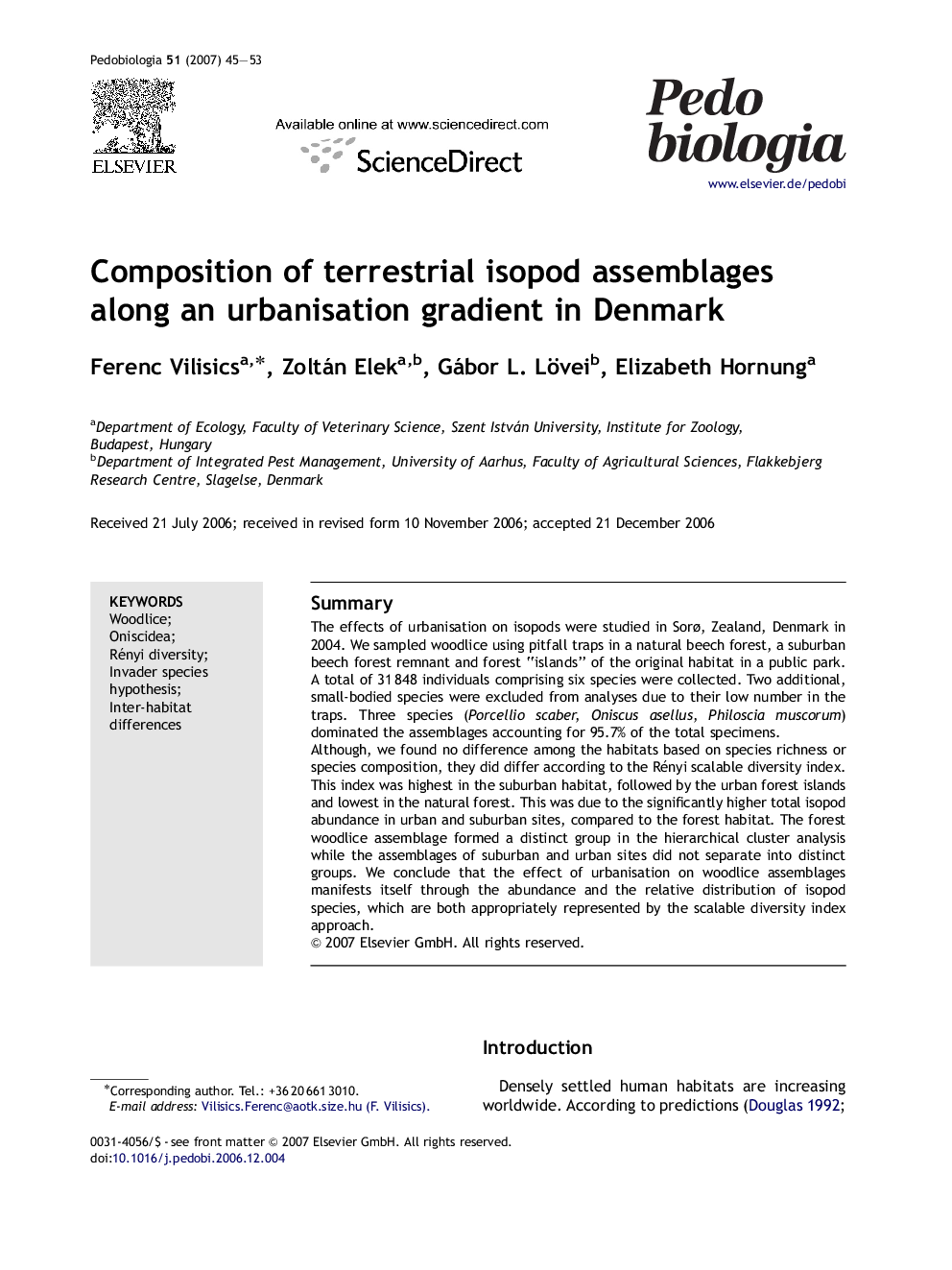| Article ID | Journal | Published Year | Pages | File Type |
|---|---|---|---|---|
| 2061203 | Pedobiologia | 2007 | 9 Pages |
Abstract
Although, we found no difference among the habitats based on species richness or species composition, they did differ according to the Rényi scalable diversity index. This index was highest in the suburban habitat, followed by the urban forest islands and lowest in the natural forest. This was due to the significantly higher total isopod abundance in urban and suburban sites, compared to the forest habitat. The forest woodlice assemblage formed a distinct group in the hierarchical cluster analysis while the assemblages of suburban and urban sites did not separate into distinct groups. We conclude that the effect of urbanisation on woodlice assemblages manifests itself through the abundance and the relative distribution of isopod species, which are both appropriately represented by the scalable diversity index approach.
Related Topics
Life Sciences
Agricultural and Biological Sciences
Animal Science and Zoology
Authors
Ferenc Vilisics, Zoltán Elek, Gábor L. Lövei, Elizabeth Hornung,
